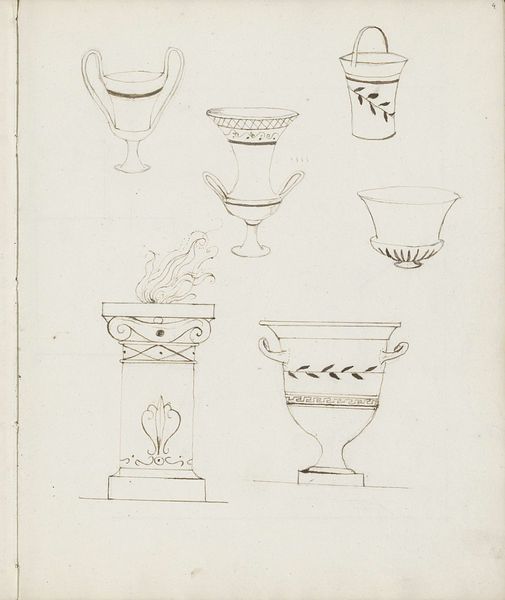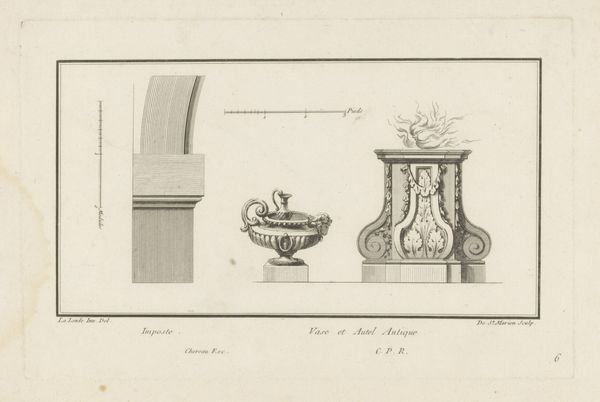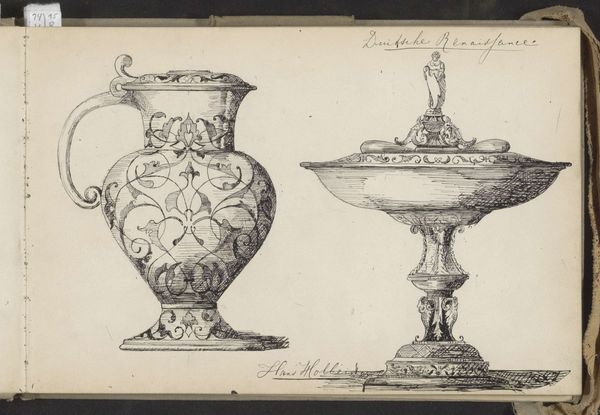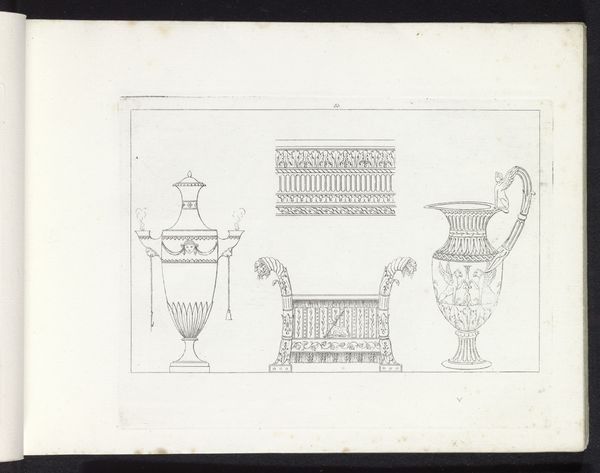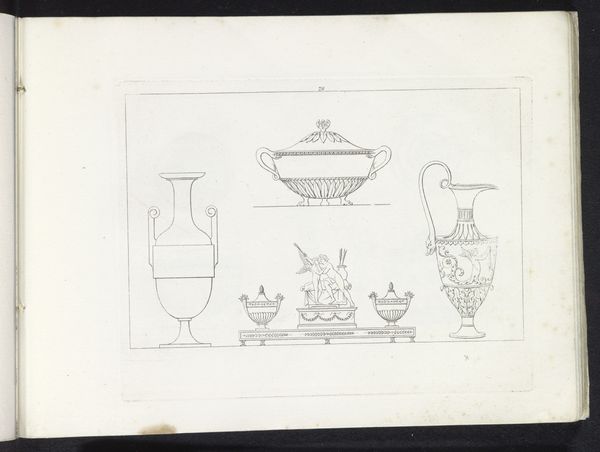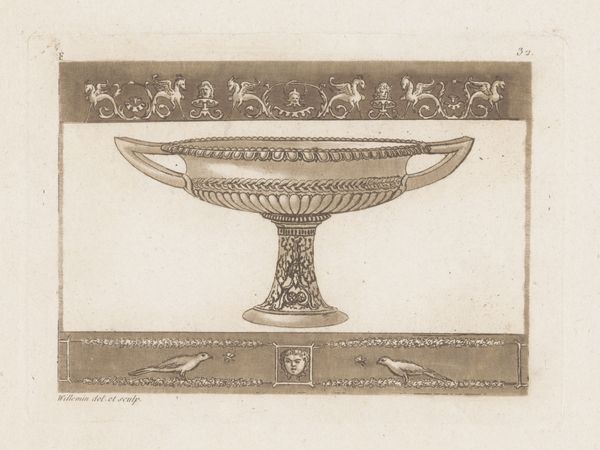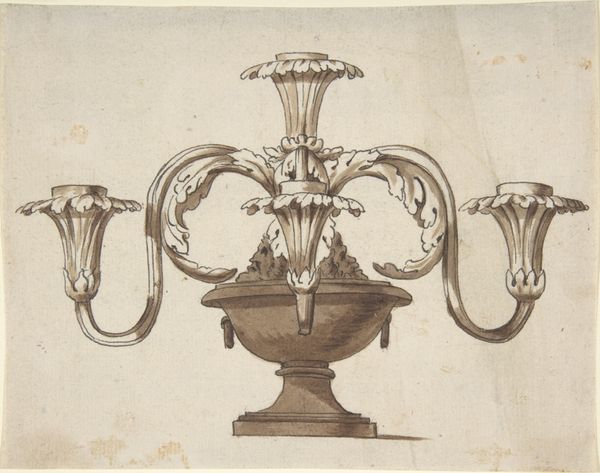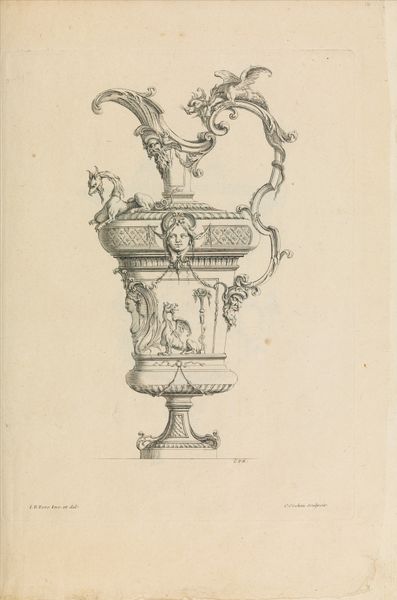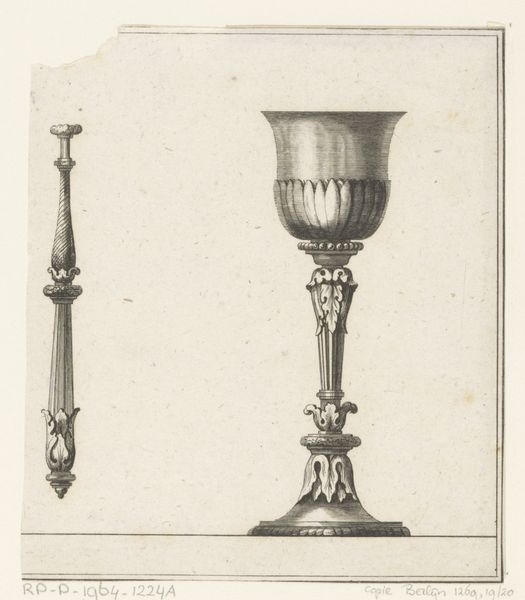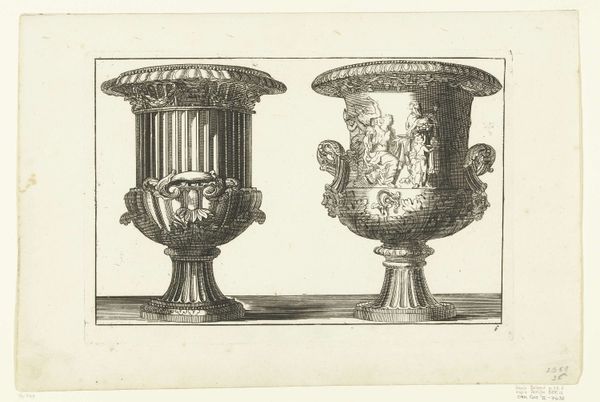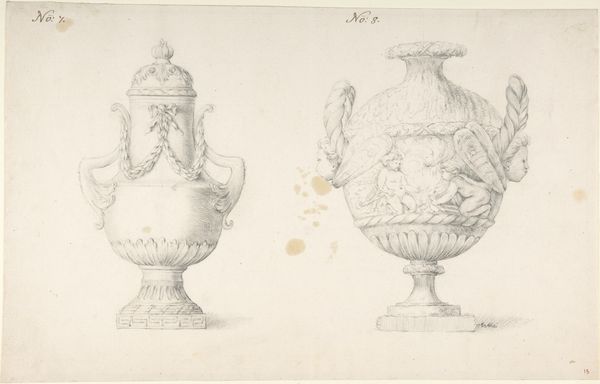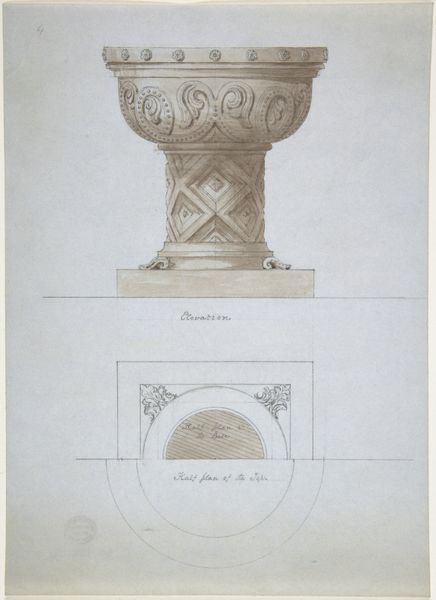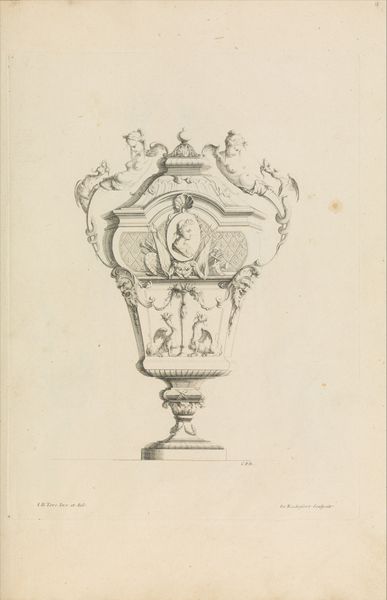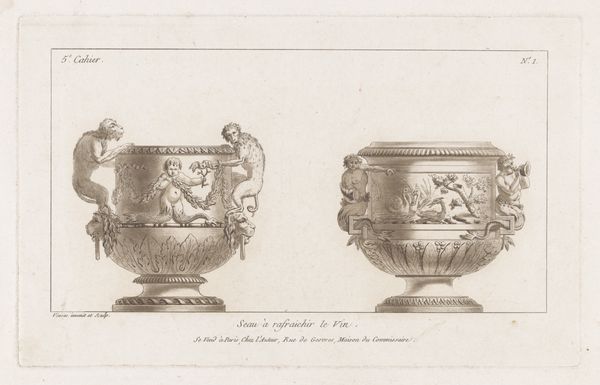
drawing, print, pencil
#
drawing
#
neoclacissism
# print
#
vase
#
form
#
geometric
#
pencil
#
line
#
academic-art
Dimensions: sheet: 3 1/2 x 6 1/2 in. (8.9 x 16.5 cm)
Copyright: Public Domain
Curator: Here we have John Gibson's "Sketch of Three Vases," a pencil drawing rendered between 1845 and 1855, currently held at the Metropolitan Museum of Art. Editor: Oh, it’s so clean, isn't it? It feels like a blueprint for potential sculptures. Very precise, a bit dreamy. I get the urge to immediately plant hydrangeas. Curator: Precisely! This drawing embodies Neoclassical ideals. Note the emphasis on line, form, and the geometric simplicity of the vessels. Gibson was deeply invested in reviving classical aesthetics through a modern lens. It begs the question: who might these vases have been for? What client sought his refined interpretation of Greek forms? Editor: You know, looking at them lined up like this, I’m wondering about serial production even back then. These don’t strike me as unique artworks but prototypes—made to be reproduced on a larger scale perhaps for decoration in the houses of rising Bourgeois? Does anyone really need three vases? Maybe to signify having excess wealth? Curator: An interesting point! Consider that the art world had a relationship to the Industrial Revolution and emerging manufacturing processes. Gibson, though dedicated to classical principles, operated within this changing economy. We need to remember the production, labor, and potentially mass appeal of these designs—not just high art aspiration, but consumption on different societal levels. How was labor organized to bring this vision to reality? Editor: Well, you've got me pondering now too. The craftsmanship, if these were scaled up, it is almost unimaginable how much the laborers’ time would have been used in their realization… the sheer skill involved. Looking at those perfect lines makes me ache. And somehow, there's something melancholy in the arrangement of these, even on paper. Like he knows the moment these will be constructed they won't ever reach the same idealistic, pure form found here. Curator: So, ultimately we appreciate this work for more than just form, we understand how form emerges from context and shapes future possibilities. Editor: Indeed. A humble, yet somehow revolutionary still life!
Comments
No comments
Be the first to comment and join the conversation on the ultimate creative platform.
